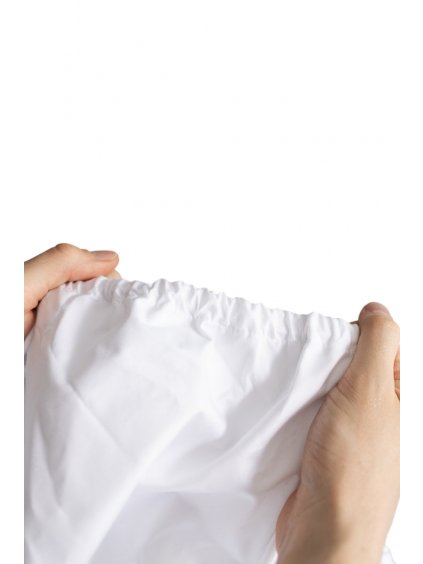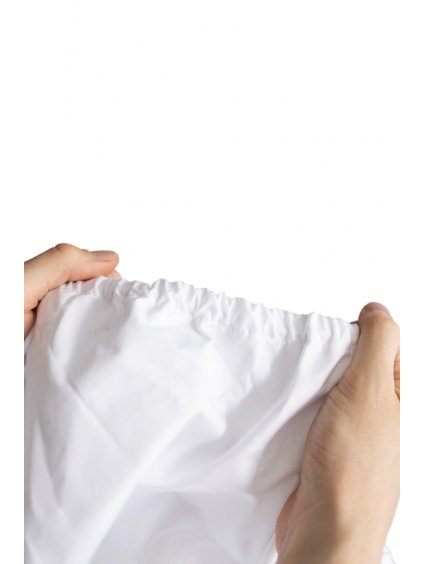Anti Allergy Mattress Protectors
- Anti-Dust Mite and Allergen Proof Fitted Mattress Protector - fitted – the most popular tip, not suitable for bunk beds, protection only from the top.
- Anti-Dust Mite and Allergen Proof Mattress Encasement - zippered – total mattress protection, necessary in the case of a bunk bed, not suitable if you have a heavy mattress.
- Anti-Dust Mite and Allergen Proof mattress Protector - non-fitted – ideal for atypical mattress sizes, suitable for travel.
- Anti-Dust Mite Mattress Encasement Nanocotton® - ideal for those with atopic skin - does not need to be covered by your own bedding. It already serves as the top layer, but can also be used as a cover.
Worldwide shipping – 7 – 10 working days
Bestsellers
One of the most common questions about anti-allergy mattress protectors is whether or not they actually work. The answer is yes – when used properly, anti-allergy mattress protectors can be effective at reducing allergy symptoms and improving the quality of your sleep.
Tbe best anti allergy mattress protector
However, it is important to choose the right type of mattress protector in order for it to be effective. The best anti-allergy mattress protectors are those that are made with nanofiber technology.
Nanofiber is a type of material that has a very small pore size, which is too small for dust mites and their allergens to pass through. This effectively blocks them and prevents them from accumulating in the mattress. This means that when you use an anti-allergy mattress protector that is made with nanofiber, you can be confident that you are protected against dust mites and their allergens.
Anti-allergy mattress protectors are an important tool for anyone who suffers from allergies and asthma. These protective covers are designed to prevent the accumulation of dust mites and their allergens in your mattress, which can help to reduce allergy symptoms and improve the quality of your sleep.What is allergy cover for mattress?
An allergy cover for a mattress is a protective cover that is designed to prevent the accumulation of dust mites and their allergens in your mattress. Dust mites are tiny insects that live in household items like bedding and carpets, and their feces and body fragments can trigger allergies and asthma. This can make it difficult to breathe, sleep, and live comfortably in your own home.
An allergy cover for a mattress is typically made with materials that are hypoallergenic and resistant to the growth of dust mites. This can include materials like nanofiber, which has a small pore size that is too small for dust mites and their allergens to pass through. This effectively blocks them and prevents them from accumulating in the mattress.
In addition to its allergy protection, an allergy cover for a mattress is also designed to be comfortable and breathable. This can help to improve your sleep quality and ensure that you stay comfortable throughout the night.
Overall, an allergy cover for a mattress can provide several benefits for allergy and asthma sufferers. It can help to reduce the symptoms of allergies and asthma by preventing the accumulation of dust mites and their allergens in your bedding, and it can also provide a comfortable and breathable sleeping environment.
What is the difference between mattress protector and mattress encasement?
A mattress protector is a removable cover that is placed on top of a mattress to protect it from spills, stains, and other types of damage. A mattress encasement, on the other hand, is a more comprehensive protective covering that completely encloses the mattress, providing 360-degree protection.
Some mattress protectors are designed to be used in conjunction with a fitted sheet, while others can be used on their own. Mattress encasements, on the other hand, are typically designed to be used on their own, and they often have a zipper that allows you to completely enclose the mattress.
In terms of protection, mattress encasements are generally more effective than mattress protectors. This is because they provide 360-degree protection, whereas mattress protectors only cover the top and sides of the mattress. This means that a mattress encasement can provide better protection against spills, stains, and other types of damage.
In addition to their protective function, mattress encasements can also provide other benefits. For example, some mattress encasements are made with materials that are hypoallergenic and resistant to the growth of dust mites, making them an effective choice for allergy and asthma sufferers.
Overall, the main difference between a mattress protector and a mattress encasement is the level of protection they provide. A mattress protector is a removable cover that is placed on top of a mattress, while a mattress encasement is a more comprehensive protective covering that completely encloses the mattress.

















